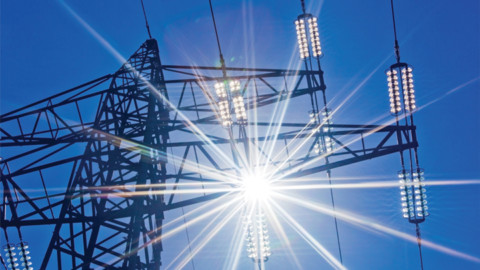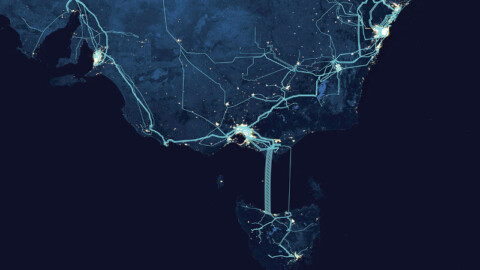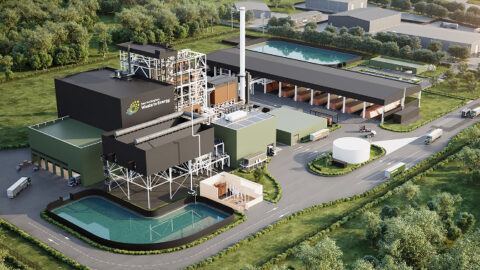By Ivor Frischknecht, Chief Executive Officer, Australian Renewable Energy Agency.
In the decades to come, it is increasingly clear that much of the future will be ‘behind the meter’. Or to be more precise, the future is going to be distributed.
Even the phrase ‘behind the meter’ is antiquated, as it draws a line between the customers and the rest of the energy system. It frames the whole electricity system from the perspective of the traditional industry players — the retailers and the networks — instead of from the customer’s point of view.
What’s behind the meter all depends after all on which side of the meter you are standing on and which way you’re facing. From the Australian household’s point of view, the whole electricity system is ‘behind the meter’ – not the other way around.
If millions of Australian households and businesses continue to invest in their own solar and battery storage systems, this vast array of decentralised consumer energy assets could create enormous headaches for the electricity market, its operator, regulator, retailers and networks. It also creates opportunities.
In the last decade, Australians have embraced rooftop solar so enthusiastically we are now the biggest rooftop solar adopters per capita in the world. Ten years ago, there were just 14,000 rooftop solar units across Australia.
Today, nearly 1.8 million Australian households now have solar panels on their rooftops, accounting to 6.4GW of generation capacity.
And that is only increasing. Rooftop solar installations hit a new monthly record in the March quarter just passed with 127MW installed, up 56 per cent from the same time last year. Rooftop solar installations are running at an annualised rate of more than 1300MW.
An estimated 1GW of rooftop solar was installed across Australia last year alone. For the first time, rooftop solar throughout Australia generated over 1000GWh in December last year.
The uptake of rooftop solar PV among commercial and industrial customers is also increasing apace with businesses outstripping residential customers.
In the next two decades, AEMO has forecast that rooftop solar will grow by at least 10,000MW, which equates to a fifth of all of Australia’s existing generating capacity.
By 2040, according to some current forecasts, 25 to 40 per cent of Australia’s generation will be coming from solar PV on the rooftops of households and businesses. To put that in perspective, at present, rooftop solar generation accounts for just three per cent of our generation.
Untapped opportunities
While grid-scale generation will always be needed, this increase in solar PV and other distributed energy resources (DER) represents a huge disruption to the National Electricity Market, and a huge challenge for the electricity system to grapple with.
On the other hand, it also represents a huge, untapped opportunity to make these DER work for the system, rather than against it.
For example, it leads to a situation where demand for electricity — which was once highest in the afternoon — becomes very peaky, where demand is very low during the day while the sun is shining and suddenly demand spikes once the sun goes down as all of the rooftop solar is no longer available.
Thanks to compulsory registration schemes, we can track where rooftop solar is installed but we don’t have visibility on how much electricity they are generating. Rooftop solar cannot currently be monitored or coordinated. We can’t optimise their output the way we can with grid-scale assets.
Home batteries present an even greater challenge. With home batteries, we don’t even know where they are in the system or how many of them there are, let alone what they are doing and we can’t control them externally.
In the coming decade, the cost of residential batteries is expected to plummet. If forecasts are accurate, the global cost curve of batteries will continue to fall as their size and capacity increases – much like computers have become smaller, faster, smarter and less expensive.
If residential batteries become cheaper and more efficient, we can expect a large number of Australian households to adopt them – particularly those that already have solar on their roofs. Last year alone, the number of Australian households installing home batteries more than doubled, from 1566 in 2016 to 3763 in 2017. And this is just the beginning.
Apart from storage, there are other technological innovations that are coming that will change the way we use electricity in our homes and businesses. More Australians will be driving electric vehicles that they charge in their homes. The Internet of Things will allow appliances to be automatically optimised for energy efficiency, and smart thermostats and smart pool systems will become the norm.
Changing the way we think about energy
In a future where millions of Australian households have solar PV on their rooftops, home battery systems and smart appliances all capable of working together, these assets will not only change the way we use electricity but will also necessitate that we change the way we think about the system.
If we don’t enable these assets to be monitored and optimised, it creates the potential for a future Australian electricity system with limited visibility, lots of instability and the need for lots of new network infrastructure to balance this. This would in turn lead to even higher network costs than Australians are already paying for.
While those lucky enough to afford their own rooftop solar and storage would experience cheaper energy costs and would be largely self-sufficient in the grid, this could be at the expense of others who cannot afford their own solar and storage who would bear the cost of network upgrades built into their power prices. All of this can be avoided however.
There needs to be a massive enablement of rooftop solar, batteries and controllable loads so they deliver benefits back to the system as a whole, with participation on a voluntary opt-in basis. This will include ways to sensibly manage demand, including incentivising the use of demand side resources as happens in other countries from Texas to Taiwan.
If consumer energy assets can be orchestrated and optimised so as to work harmoniously, distributed energy resources could save consumers money on their power bills, reduce the need for network infrastructure, help deliver grid stability services and inject dispatchable power back to the grid when and where it is needed.
To deliver this, there are certainly technical challenges to overcome. However, this shift to distributed energy also creates commercial issues and regulatory challenges.
We need incentives for people to allow access to their solar and battery storage devices and appliances. We need commercial and business to benefit from integrating into the system. We need new business models to drive this innovation so it is seamless and automated. We need new market rules to allow these unregulated assets to be valued as part of the energy mix.
Retailers could become the future orchestrators of consumer energy, but at the moment their existing business model is to sell electricity to customers.
Networks also have an important role to play, but existing networks make money through regulated returns from expenditure on grid infrastructure.
In the US, cable companies are becoming new consumer energy enablers. In Australia, it is conceivable that this “energy enabling” might be done by telecommunications companies, or it could be a service offered by tech giants like Google, Amazon and Apple who are moving into home automation technologies.
Distributed generation in action
Already, ARENA is supporting a wide range of studies and pilot projects that look at how to optimise consumer energy.
In South Australia, AGL is already rolling out their virtual power plant project involving 1000 AGL customers in Adelaide, by aggregating 1000 batteries in 1000 households and businesses.
Earlier this year, Simply Energy announced a $23 million project in Adelaide, with $6 million in ARENA grant funding to create a virtual power plant consisting of 1200 households totalling 6MW of capacity, and a further 2MW of demand response from commercial businesses.
This will involve installing subsidised Tesla Powerwall 2 batteries in households with existing rooftop solar, which will then be coordinated and aggregated. This virtual power plant will also involve the ARENA-funded Greensync’s deX platform and the South Australian Power Network.
In Victoria, ARENA is also supporting a feasibility study into a “virtual microgrid” for the Latrobe Valley. US-based energy startup LO3 created and manages the Brooklyn Microgrid, and would look to create a local energy marketplace of 200 dairy farms, 100 households and 20 other commercial and industrial businesses in Gippsland.
This “virtual microgrid” would see these customers install solar and storage, and would allow them to buy and sell their renewable energy locally using blockchain-based peer-to-peer energy trading platform Exergy.
Last summer, ARENA and AEMO also kicked off a three-year trial of demand response. This trial is funding 10 pilot projects to deliver 200MW of demand response emergency reserves across three states in NSW, Victoria and South Australia.
Most of these pilot projects are trialling paying energy consumers — both commercial and industrial customers and residential customers — to be on standby to conserve energy during extreme peak demand events, such as a summer heatwave. All participation in these schemes is voluntary and all businesses and residential consumers benefit from their involvement.
Beyond this trial, ARENA has also funded a Sydney boutique energy retailer Pooled Energy to trial smart pool system technology in 5000 swimming pools across NSW, which uses cloud-based software and sensor-based control systems to optimise backyard swimming pools so they can be turned into controllable loads.
In March, ARENA announced a $12.5 million DER funding initiative. Under this initiative, ARENA has called for pilot projects to look at improving network hosting capacity and for studies to look at improving orchestration and integration of high levels of consumer energy.
It is too early to say which of these new business models or new technologies might ultimately be the best way to enable and integrate distributed energy, but one thing is certain; we cannot afford to ignore the customer side of the equation.
In a future where the customer side of the system has a huge role to play in delivering supply and managing demand, our current industry-centric view of the system has to change.
Instead, we need to think about the energy system holistically – and that includes finding ways for customer’s household solar, batteries and appliances to be utilised for the benefit of the system as a whole.

















